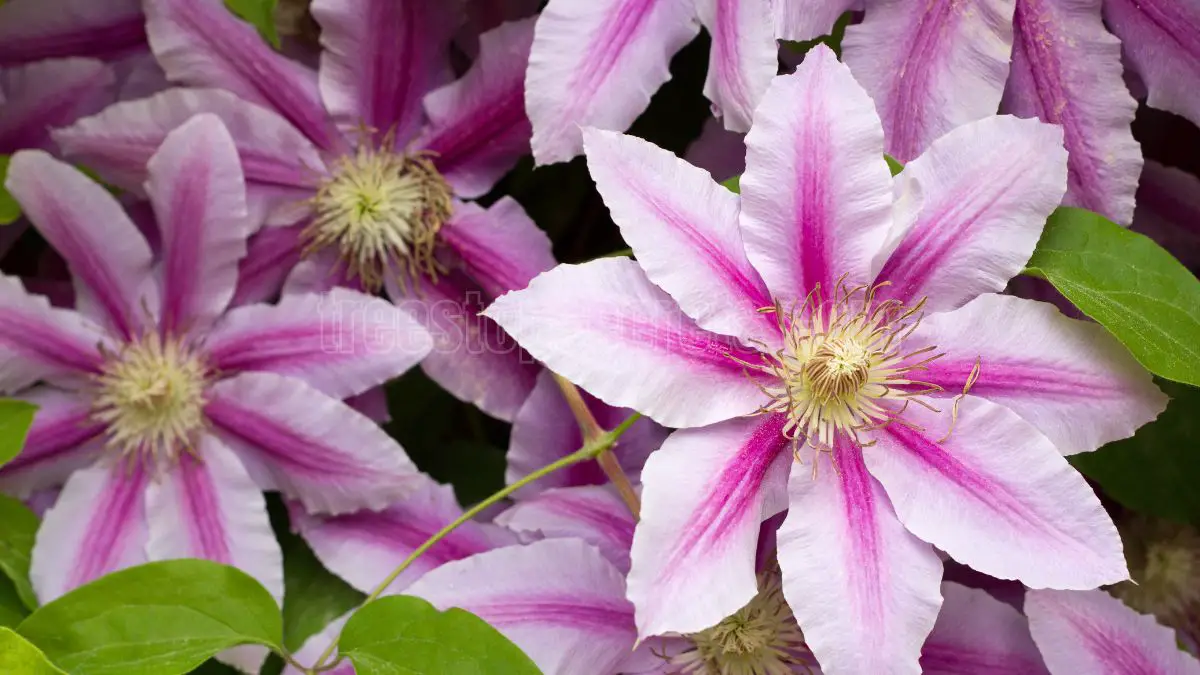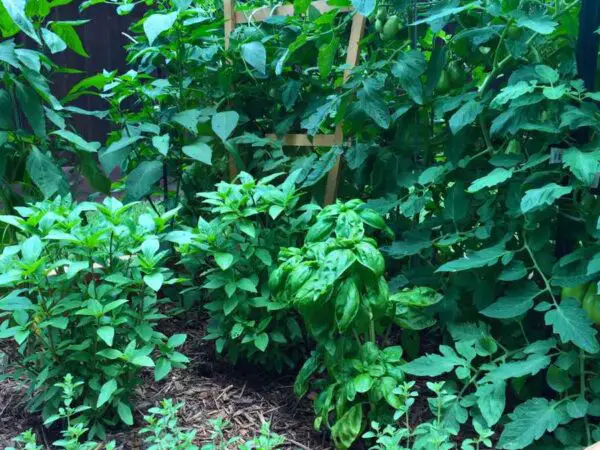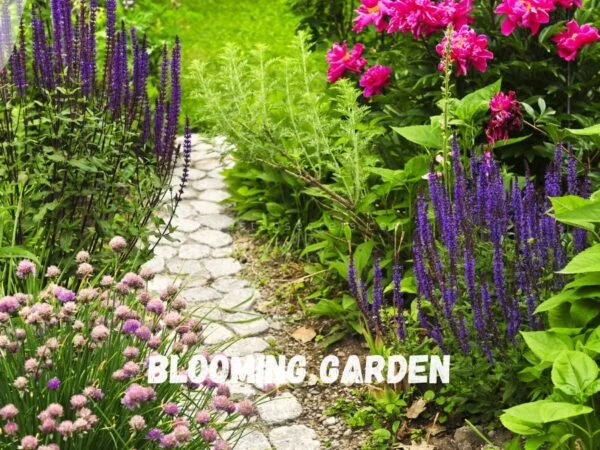Pruning clematis at the right time is crucial for ensuring healthy growth and abundant blooms. Different types of clematis have distinct pruning needs based on their blooming cycle. Understanding when to prune your clematis not only helps prevent damage but also encourages vibrant, beautiful flowers year after year. This article will guide you through the best times to prune various clematis varieties and provide tips to keep your plants flourishing.
Clematis is pruned according to its blooming habit. Group 1 clematis, which bloom in early spring, should be pruned right after flowering. Group 2, which blooms in late spring and early summer, needs light pruning in early spring and after the first bloom. Group 3, which flowers in late summer or fall, should be pruned in early spring to a pair of strong buds.
Wondering how to get the best blooms from your clematis? Proper pruning is the key! Keep reading to learn the secrets of when to prune each clematis group, ensuring your garden is bursting with color and life. With the right timing and techniques, you’ll transform your clematis into a showstopper every season!
Understanding Pruning Groups
Let's get down to the nitty-gritty of keeping those clematis blooms popping. Clematis, the superstar climber of the garden world, holds its secrets in its pruning groups. These little groups aren't just a gardener's fancy—they actually help me figure out when exactly to give my plants a good trim.
Pruning Group 1: Early Bloomers
This bunch is all about making an entrance. Group 1 clematis flowers come out swinging in mid to late spring. For these early birds, the best time to get in there with the pruners is after they’ve strutted their stuff. But not before! Otherwise, I'm just cutting away next year’s show. Here's who's in on this group:
| Clematis Species |
|---|
| Clematis alpina |
| Clematis macropetala |
| Clematis montana |
| Clematis armandii |
| Clematis cirrhosa |
These guys perform on last year’s wood. So, once the bloom parade ends, it's time to snip without losing next spring’s fireworks. Friendly tips from Royal Horticultural Society and Sunday Gardener have been my saving grace more times than I can count.
Pruning Group 2: Large Flowers
Next up, Group 2 is home to those big, show-off flowers that hit their stride in late spring or early summer. They like to pull a double-act, blooming on both new and old wood, so when I'm snipping around here, I go gentle. Severe pruning? Bah—only once every few years, and ideally before those first shoots peek out.
| Clematis Characteristics |
|---|
| Blooms in late spring/early summer |
| Flowers on new and old growth |
| Keep it light and gentle when pruning |
Correct pruning is like giving these divas a head start; they reward me with awe-inspiring displays. I often look up Fine Gardening when I need a refresher on the finer points.
Pruning Group 3: Late Summer Bloomers
And then we have the late bloomers, Group 3, that skyrocket from mid to late summer. These bloomers show up on new growth, so I go in hard with the pruning shears right before stuff starts sprouting. We're talking cut-back-to-foot-off-the-ground levels, folks.
| Pruning Group 3 Details |
|---|
| Blooms in late summer or fall |
| Flowers on new growth |
| Severely prune before the growth spurt |
This technique prompts a frenzy of fresh growth and brings on a floral bonanza. Saving grace insights from RSV (https://www.rhs.org.uk/plants/clematis/pruning-guide) and Fine Gardening mean my garden’s always a step ahead.
My clematis coaching manuals are those pruning groups, guiding me to lush, vibrant landscapes filled with blooms worth bragging about.
Timing for Pruning Clematis
Figuring out when to give your clematis a trim isn't just a game of chance; it's crucial for keeping the vine happy and in full bloom. The timing hinges on the clematis group you’ve got hanging around in your garden.
After Flowering in Spring
If you've got those early bloomers, tagged as Pruning Group 1, you're looking to snip them right after they've done their floral show, usually hitting mid to late spring. I like to wait till Jack Frost has packed up and left town before grabbing the shears. This gives the plant a chance to beef up for a knockout bloom next year.
Here's a cheat sheet for timing your snipping:
| Pruning Group | Blooming Time | Pruning Time |
|---|---|---|
| Group 1 | Early in Spring | After flowering (Mid-Late Spring) |
| Group 2 | Early-Mid Season | Late February-Early March |
| Group 3 | Late Summer | February-Early March (hard pruning) |
For clematis showing off between Christmas and late summer, I dive in right after they quit. The late summer show-offs? Hold those clippers until early spring (Joe Gardener).
Pruning in Early Spring
If your garden's graced with Group 2 or 3 clematis, the early spring pruning game is the way to go. For the Group 2 folks, those who bloom early to mid-season, the end of February to the start of March is your window. A good trim to leave a nice base of branches and buds keeps them content and blooming like champs (Sunday Gardener).
Then there’s the late bloomers in Group 3. They appreciate the heavy-handed approach—trim them back to around a foot high in February or March. This drastic cut does wonders, getting them ready for their summertime spectacle (Epic Gardening).
Getting these timing tricks down has me playing plant-whisperer with my clematis, setting them up for a stellar season of blooms.
Importance of Pruning Clematis
Impact on Growth and Flowering
Snipping away on my clematis isn't just for fun; it's a must for keeping it lively and bursting with blooms. Every time I give it a trim, I'm greeted with an explosion of flowers. Pruning kickstarts fresh growth, giving me more blossoms to gaze at, making the plant a true showstopper. It's like giving it a trendy haircut that not only looks nice but also makes the blooms pop right where I can appreciate 'em.
I've figured out that snipping with a plan can deliver the wow factor season after season. Keeping my clematis in check with regular trims stops it from turning into an unmanageable mess and lets the breeze flow through, keeping it happy and healthy.
Here’s how trimming shakes things up with my clematis:
| Snip & Trim | What Happens |
|---|---|
| Boosts new sprouts | More blooms |
| Keeps things neat | Stops it from being a jungle |
| Lets air flow | Cuts down on those pesky plant diseases |
Preventing Diseases and Pests
Chopping away is not just for beauty queen blooms; it’s a guard dog for my clematis’s health, warding off sickness and bug infestations. Getting rid of those sad, droopy, or infected bits actually keeps my plant shining all year long (Joe Gardener).
Mindful snipping stops troublemakers like clematis wilt and stem rot fungus right in their tracks (Fine Gardening). Nipping these problems in the bud keeps my clematis thriving and ensures I get to enjoy its colorful bloom explosion annually.
Part of my plant care ritual involves playing detective—watching how my clematis grows before going in for the trim. Observing its growth habits helps me decide when's the perfect time to snip. So, spending time with my clematis before I bust out the pruners is an essential part of my green-thumb routine (Joe Gardener).
Best Practices for Pruning Clematis
Pruning clematis might sound confusing at first, but with a few handy tips, it can turn into a straightforward task. I've discovered that dodging common errors and paying attention to how these plants grow are key to getting pruning right. Trust me, learning to read your clematis can save you a ton of trouble and make your garden look stunning.
Pruning Mistakes to Avoid
One of the blunders I can make is ignoring my clematis for too long, letting them grow wild. When they get too bushy, that’s when the uninvited visitors like bugs and diseases start showing up. Though as Joe Gardener points out, plants are tough cookies and bounce back if given a couple of years to recover. Still, a little consistent pruning goes a long way in keeping them fit and fine.
Take a look at some pruning oopsies to steer clear of:
| Mistake | What It Means |
|---|---|
| Skipping Regular Pruning | Ignoring them can spell trouble for plant health. |
| Snipping at the Wrong Time | Cut at the right time to match bloom cycles. |
| Chopping Off Too Much | Going overboard on pruning can stress the plant out. |
| Missing Out on Dead or Damaged Bits | It's vital to clear out anything that’s not healthy and thriving. |
Observing Growth Patterns
Before I even think about getting the pruning shears out, I look closely at how my clematis are growing and behaving. Observing helps me figure out which branches need trimming and which are thriving. Recognizing the plant's needs this way makes a world of difference.
Here are some growth traits to note and the actions you should take:
| Growth Trait | What to Do |
|---|---|
| Dead | Snip away immediately to guard the plant's well-being. |
| Dying | Trim back to give the plant a boost. |
| Damaged | Cut back to encourage fresh, healthy shoots. |
| Diseased | Chop away those parts pronto to stop infection. |
Regular check-ins help me keep tabs on my clematis' health all year long. Setting clear goals ahead of pruning and clearing out any unwell parts ensures my plants stay lively. Doing this has transformed my clematis into the pride of my garden.
Specifics of Pruning Clematis
Pruning clematis can feel like you’re trying to crack the Da Vinci Code, but once you know the basics, it’s like having a chat with an old friend. I realized early on that knowing what group my clematis falls into is like holding a secret weapon.
Clematis Pruning Guidelines
Let’s break it down. Clematis plants are divas, each with their own set of demands—and understanding when they like to perform is crucial. I categorize them into three distinct groups based on when they like to steal the show and how old their blooming branches are. Here’s the rundown:
| Pruning Group | What They're About | Prima Donnas of This Group |
|---|---|---|
| Group 1 | They flaunt their stuff in early spring, so hands off with those pruners then! | Clematis alpina, Clematis macropetala, Clematis montana |
| Group 2 | These guys love a big audience with their large blooms in early summer. | 'Nelly Moser', 'The President Niobe' |
| Group 3 | Late bloomers all the way, strutting their stuff mid to late summer. | Various late flowering varieties |
When it comes to Group 1, I repeat to myself like a broken record: "Don’t prune in early spring!" Why mess with perfection before it shines? As for Group 2, I snip them back after their curtain call, and Group 3 gets the haircut in following springtime.
Grouping Clematis for Pruning
Making sure my clematis isn't the landscape equivalent of a bad hair day requires separating them like I would my laundry. Here's what I do:
Grouping Strategy:
- Tag Your Babies: I’m not talking about a tattoo session—just simple labeling. I jot down who belongs where, either in my trusty garden planner or with tags stuck in the ground.
- Seasonal Snipping: Once they’re sorted, I let the seasons dictate my actions:
- Spring: I’m on standby. Group 1 stays untouched, while Groups 2 and 3 get prepared for their tailored pruning.
- Post-Flowering Drama Queens (Group 2): I give them a trim as soon as the applause dies down.
- Frequent TLC: I keep a vigilant eye throughout the growing season for any plant misery—think dead, dying, or diseases. And when those appear, I go all surgeon on them—even Joe Gardener advocates for this kind of swift justice to keep plants happy and alive.
With these tips, maintaining my clematis isn’t just easy—it's a sure way to keep them strutting their stuff and looking fabulous, season after season.
Tips for Successful Clematis Pruning
Pruning clematis might seem intimidating, but with the right mindset, it's kind of like having a zen moment in the garden. Here’s how I manage to keep my clematis looking top-notch while pretending I'm an expert.
Pruning Newly Planted Clematis
Ah, the joy of new beginnings! When I first plant clematis, my approach depends on its stem situation. If it's a bushy little thing with multiple stems, I skip the snip. For those loner single stems, though, I get the clippers out in the first spring (around February/March) and cut back to a pair of buds, about a foot off the ground. Trust me, it’s like giving it a fresh start with a new haircut. Once it's growing like a weed, I adjust based on its clematis group—who knew plants could have cliques, right?
| Plant Type | Initial Pruning | Timing |
|---|---|---|
| Multiple Stems | No initial pruning needed | N/A |
| Single Stem | Trim down to a pair of buds (12 inches) | February/March |
Adjusting Pruning Techniques
The more time I spend with clematis, the more I realize these plants don't play by one rulebook. Group 3 varieties, for example, like to party in late summer or fall. So, I give them a dramatic chop just before their growth kicks off. This means cutting stems back to some good buds within a foot of the ground. It might sound harsh, but they secretly love it!
Pruning clematis is a bit like setting up the stage for next year’s performance. Those late bloomers get chopped back by 2-3 feet in the deep winter, while the early birds get a nip-tuck right after their first show of flowers. Here’s my little cheat sheet for keeping my pruning game on point:
| Clematis Group | Blooming Time | Pruning Time | Pruning Method |
|---|---|---|---|
| Group 1 | Early spring | After flowering | Light trim post-bloom |
| Group 2 | Early summer | Late February/March | Modest cut to maintain shape |
| Group 3 | Late summer/fall | Late winter | Bold trim to strong buds |
By sticking to these tips (and a sprinkling of trial and error), I keep my clematis healthy and happy. It’s like playing plant therapist—snipping a little here and there to help them express themselves in full bloom!
Final Thoughts on When to Prune Clematis
Pruning clematis at the right time is essential for their health and beauty. By understanding the specific needs of each clematis group, you can keep your plants thriving and your garden looking its best. With these tips, you’ll ensure abundant blooms and a stunning display every year. Happy gardening!
FAQs about When to Prune Clematis
Q: What is the best time to prune clematis?
A: The best time to prune clematis depends on its type. Group 1 clematis should be pruned after spring flowering, Group 2 in early spring and after the first bloom, and Group 3 in early spring.
Q: How do I identify which clematis group my plant belongs to?
A: To identify your clematis group, observe its blooming time. Early spring bloomers are Group 1, late spring and early summer bloomers are Group 2, and late summer or fall bloomers are Group 3.
Q: Can I prune clematis in the fall?
A: While Group 3 clematis can be lightly pruned in the fall, it's generally recommended to prune in early spring to promote healthy growth and blooms.
Q: What happens if I prune clematis at the wrong time?
A: Pruning at the wrong time can reduce the number of flowers or cause the plant to miss a blooming cycle. It's important to follow the guidelines for each clematis group to avoid this.
Q: How much should I cut back my clematis?
A: Group 1 clematis only need deadheading, Group 2 should be pruned lightly to maintain shape, and Group 3 should be cut back to 12-18 inches from the ground.
Q: Should I fertilize clematis after pruning?
A: Yes, applying a balanced fertilizer after pruning can help promote healthy growth and abundant flowering. Ensure proper watering and mulching for the best results.
Image Source: Paid image from CANVA





